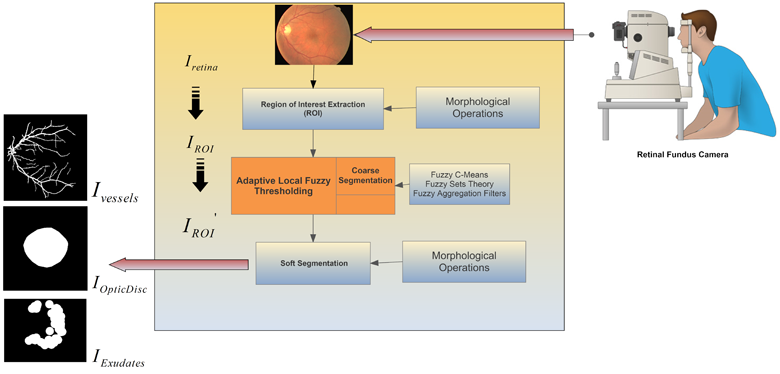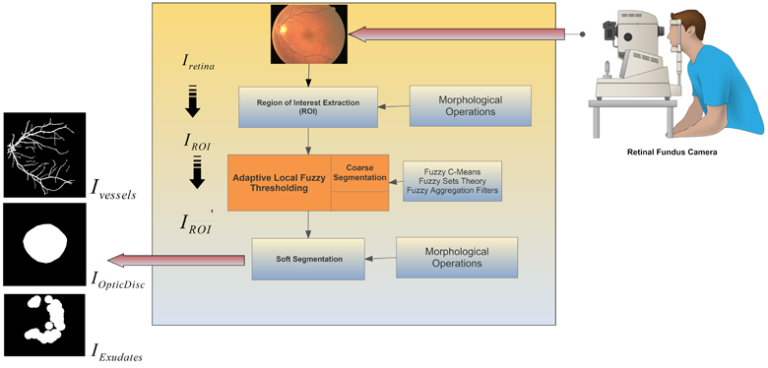Abstract

Eye exams can be as efficacious as physical ones in determining health concerns. Retina screening can be the very first clue to detecting a variety of hidden health issues including pre-diabetes and diabetes. Through the process of clinical diagnosis and prognosis; ophthalmologists rely heavily on the binary segmented version of retina fundus image; where the accuracy of segmented vessels, optic disc and abnormal lesions extremely affects the diagnosis accuracy which in turn affect the subsequent clinical treatment steps. This paper proposes an automated retinal fundus image segmentation system composed of three segmentation subsystems follow same core segmentation algorithm. Despite of broad difference in features and characteristics; retinal vessels, optic disc and exudate lesions are extracted by each subsystem without the need for texture analysis or synthesis. For sake of compact diagnosis and complete clinical insight, our proposed system can detect these anatomical structures in one session with high accuracy even in pathological retina images. The proposed system uses a robust hybrid segmentation algorithm combines adaptive fuzzy thresholding and mathematical morphology. The proposed system is validated using four benchmark datasets: DRIVE and STARE (vessels), DRISHTI-GS (optic disc), and DIARETDB1 (exudates lesions). Competitive segmentation performance is achieved, outperforming a variety of up-to-date systems and demonstrating the capacity to deal with other heterogenous anatomical structures.

